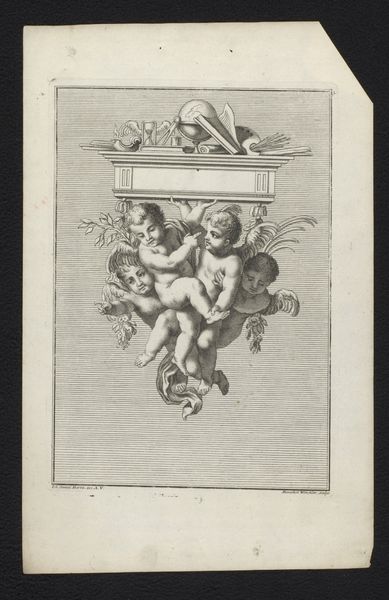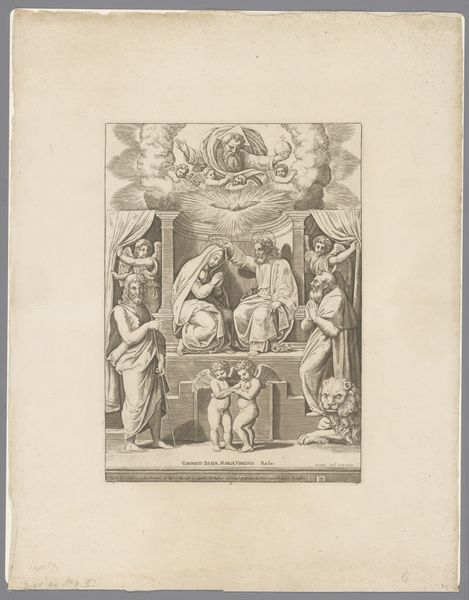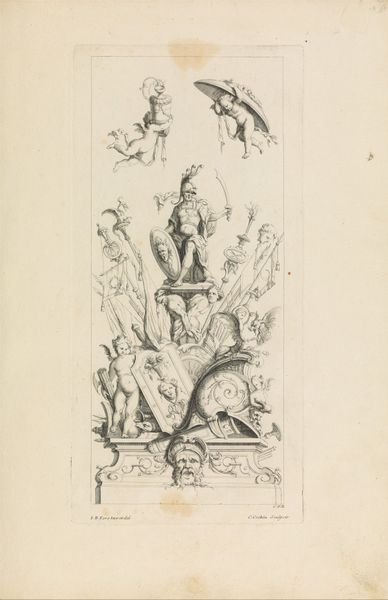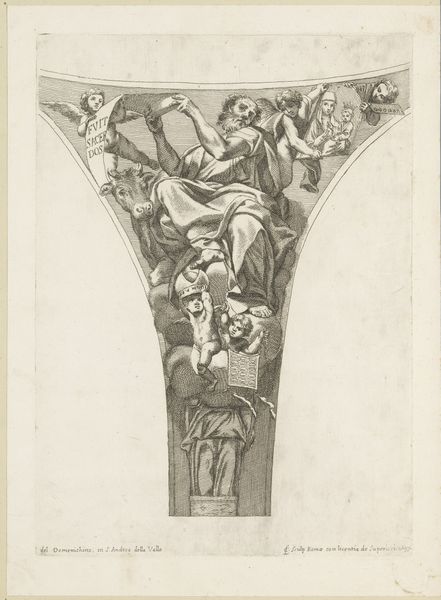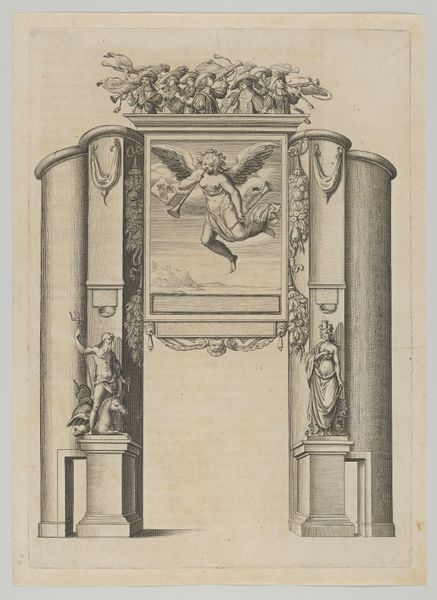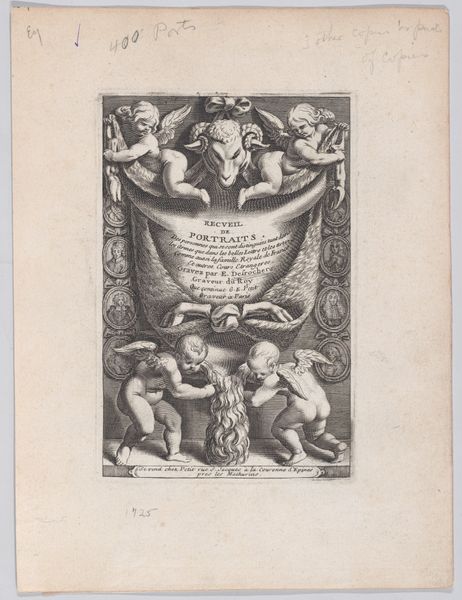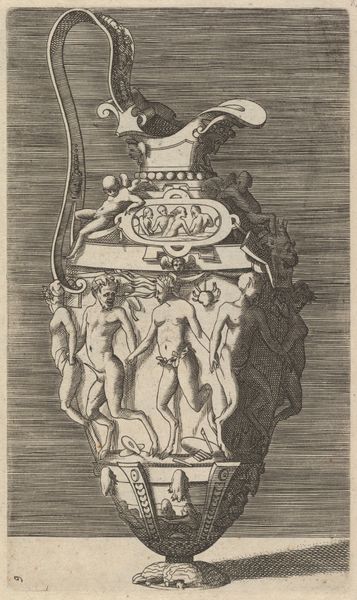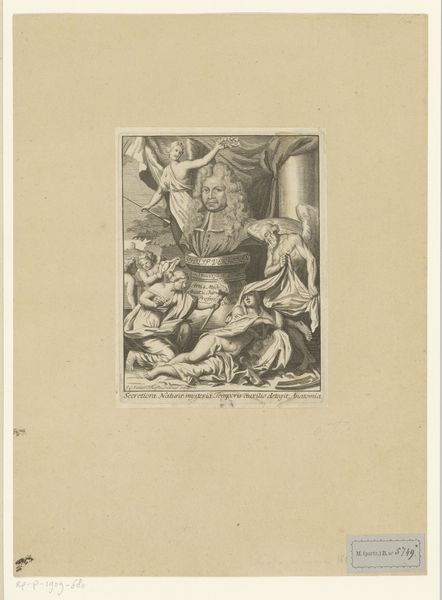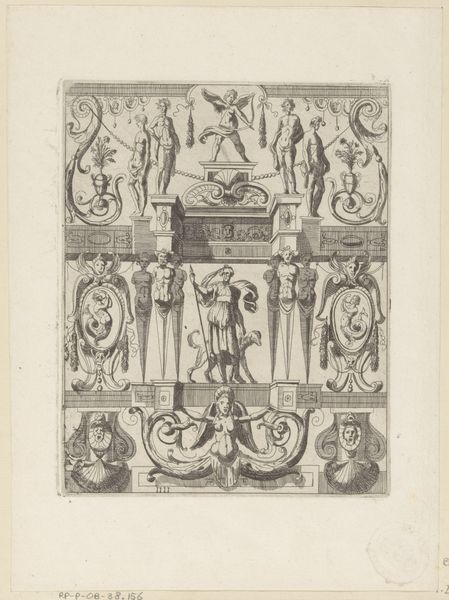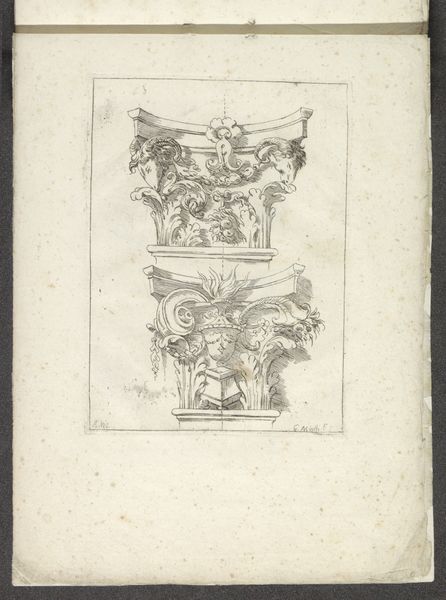
engraving
#
allegory
#
baroque
#
figuration
#
engraving
Dimensions: height 265 mm, width 190 mm
Copyright: Rijks Museum: Open Domain
Editor: This engraving, dating from 1737 to 1754, is entitled "Three Putti Carrying a Vase." The artist is Benedikt Winkler, and it is currently housed at the Rijksmuseum. The first thing that strikes me is its ethereal quality - the delicate lines of the engraving give it a dreamy, almost otherworldly feel. What’s your interpretation of this piece? Curator: Ah, yes! This Baroque beauty, it practically whispers secrets of another era. Look at those cherubic putti struggling, almost playfully, to hoist that rather hefty vase. There's something inherently joyful in their exertion. Winkler masterfully blends the sacred and the slightly absurd, don't you think? It reminds me a bit of a Baroque-era meme - like the 18th century equivalent of 'the floor is lava', only the floor is…well, everything below the clouds! Do you sense any other deeper symbolic elements beyond the whimsy? Editor: Perhaps the vase represents something precious, like knowledge or virtue, and the putti are working together to elevate it. Or am I overthinking it? Curator: Never underestimate the power of collective effort! Baroque art is known for its ornate symbolism, but perhaps this print suggests something a bit more earthly. The putti strain and heave, yes, but with smiles on their faces. What is it about cherubs in art that continues to inspire? Editor: It gives a sense of lightness and grace, I think. It's interesting how those chubby children end up becoming such powerful, almost spiritual figures. Curator: Indeed. This little engraving packs quite a punch, eh? Editor: It really does! I wouldn't have noticed the balance between labor and levity had you not brought it to my attention. Thanks for helping to bring that alive!
Comments
No comments
Be the first to comment and join the conversation on the ultimate creative platform.
